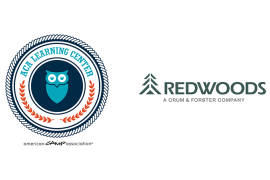For too long, the topic of child sexual abuse prevention at camp — and other youth-serving organizations — was focused too narrowly on keeping abusers out. Whether it was through criminal background checks, professional and family references, or other forms of vetting, the idea was that we could protect campers by simply excluding bad actors from gaining access to camp.
As our understanding of abuse has evolved, however, there has been a growing recognition that abuse is far more widespread — and far more diverse in nature — than has been previously recognized. Whether it’s adult-to-child abuse perpetrated by someone who has never been previously caught — meaning they won’t show up in criminal background checks — or peer-to-peer abuse that escalates from bullying, this range in both types of abusers and types of abuse means that we need a wide toolbox of prevention strategies. And excluding potential abusers from camp is just one line of defense among many.
One perspective that has gained traction over time is that — alongside efforts to prevent access to camp — we have to create a culture where abusive and potentially abusive behaviors are less likely to happen, and are more likely to be detected and challenged early when they do. Creating both staff and camper codes of conduct is a great way to establish and reinforce that culture.
Staff and camper codes of conduct are essentially supplemental to larger rule books or handbooks, and serve to emphasize "the nonnegotiables." This creates buy-in, understanding, and ownership across camp culture of the fact that high-risk behaviors will not be tolerated.
This is not the place to explore the details of specific protocols, practices, or detailed procedures. The trick is to keep these Codes of Conduct relatively simple, brief, and focused. For example, a Staff Code of Conduct might include expectations regarding:
- Supervision: Maintaining ratios; avoiding alone time; being actively engaged; managing vulnerable times or locations — such as restrooms or cabins
- Discipline: What forms of discipline or rule enforcement are and are not permitted
- Communication: A commitment to maintain open, respectful communication, both with other staff and campers
- Interpersonal Relationships: Rules on how to handle relationships between staff members, and a firm commitment to never engage in intimate or romantic relationships with campers, regardless of their age
The Redwoods Group has a sample Staff Code of Conduct which is free to download and can be adapted to meet each camp’s needs.
Similarly, the Camper Code of Conduct exists separately from your detailed camper handbooks or welcome-to-camp materials. And it is designed to establish the baseline expectations of what it means to be a camper at your camp. It also encourages campers to take ownership of maintaining a safe and respectful camp culture.
In this case, a Camper Code of Conduct might cover:
- A promise to abide by all rules
- Acknowledgement and consent that searches or other disciplinary actions may be taken
- A commitment to treat all campers and staff with respect
- An agreement to refrain from any unsafe behaviors, including bullying, drug or alcohol consumption, sexual behavior, or communications
- An acknowledgment of the potential consequences if the Code is violated
Download our sample Camper Code of Conduct.
In order to be effective, both camper and staff codes of conduct will ideally be specific and customized to the culture, programming, and language of the unique nature of each camp. And they’ll be discussed regularly and referred back to — both during regular staff or camper meetings and also in specific situations where discipline or behavioral interventions are necessary.
Ultimately, there is no one prevention measure that will protect campers or staff from abuse. But that’s precisely the point. By emphasizing an overall culture of safety and respect, codes of conduct can help to create a proactive environment where everyone is engaged in maintaining safety. The end goal is a culture where layers of protection are embedded across all aspects of camp life — making abuse, and potentially abusive behaviors, almost impossible to perpetrate and easy to detect and respond to.
This blog is sponsored by The Redwoods Group — a mission-driven insurance carrier that only insures camps and other youth-serving organizations. Redwoods' model leverages data and insights from its insuring relationships to help customers scale their mission, protect their campers and create safe communities for all.
Periodically, the American Camp Association (ACA) makes timely and relevant information about products and services available to its members so they can make informed decisions for their camps. However, the ACA does not endorse products, services, or companies.




